4th Year
MONTHS
47 & 48
4th Year – Months 47-48
Four-Year-Olds Love to Say, “I did it myself!”
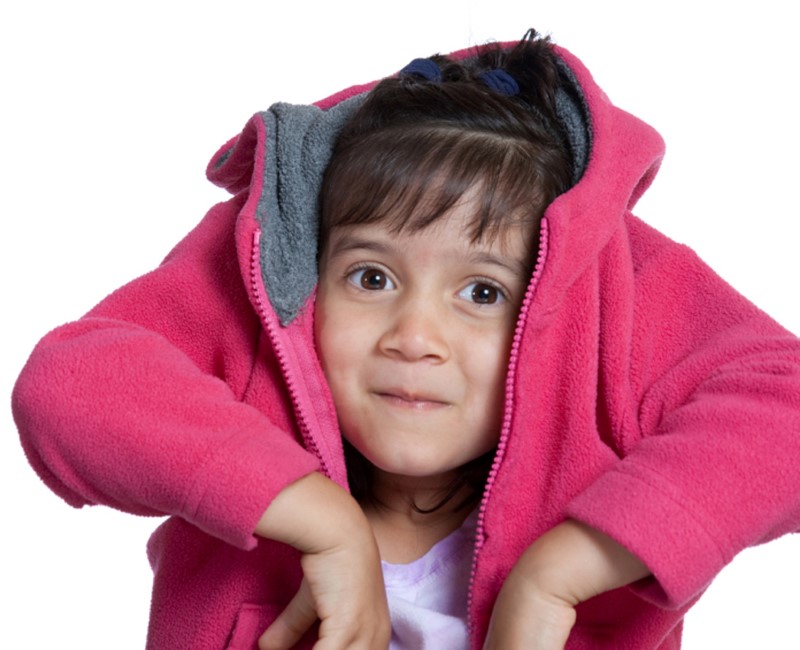
- By the age of four, many children can dress themselves.
- It is still easier to pull a zipper down than up. Shirts sometimes end up backwards or inside out.
- With your encouragement, your child will keep trying.
- You can help by choosing simple, loose clothing.
- Fasteners like snaps, buttons, zippers and laces are tricky. Look for shirts, pants and shoes without these kinds of fasteners.
Most 4-year-olds can also brush their teeth and wash their hands. These self-help skills are important to a child’s independence. When you tell your child, “It’s time to wash your hands for supper,” they can run to the bathroom, pull out the stool, turn on the water, wash, dry and run to the table. It makes them feel good to say, “I did it all by myself.”
What’s It Like to Be 47–48 Months Old?
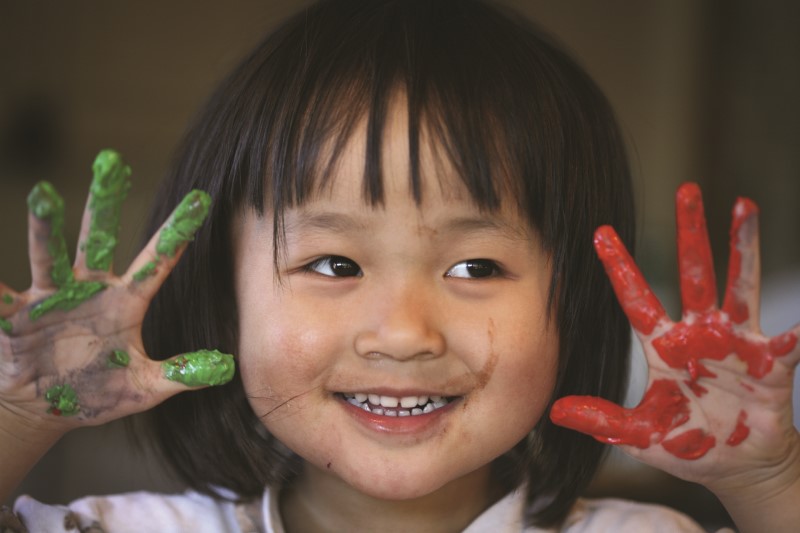
How I Get Along with Others
- I play pretty well with 2-3 children — but may be impatient in larger groups.
- I may show-off.
- I have a great sense of humor. I love nonsense and being silly.
- I am easily over-stimulated and may go “out-of-bounds.”
How I Move
- I have a longer, leaner body.
- I am lively and active.
- I am a “worker.” I have drive.
- I can jump about 40 inches and land on my feet.
- I can throw a large ball and kick with some accuracy.
- I dress myself. q My finger-hand activities are getting more coordinated.
How I Think & Learn
- I really want to learn. I can solve some problems.
- I accept changes as long as you prepare me for them.
- I understand simple reasons for things.
- I recognize today and tomorrow.
- I can do two things at once.
- I understand the concept of “three” and can name more objects.
- I like dramatic play and like to use simple props.
- My attention span is 8 – 12 minutes long.
- I call people names and might swear.
- I enjoy silly words and rhyming without meaning.
- I can understand about 1,500 words.
Some children do things earlier or later than described here. Most differences are normal. Focus on what your child can do and get excited about each new skill. If you notice that your child is lagging behind in one or more areas for several months, use this list to talk with your doctor about your child’s development.
Watch Out: Medicines with Iron Can Be Deadly
Iron medications (sometimes identified as ferrous sulfate, ferrous gluconate or ferrous fumarate) can be deadly to a young child.
- Iron is available in combination with vitamins or alone.
- A small number of iron pills consumed by a child can cause death.
- Keep medicines with iron out of the reach of children. Do not discard pills in a wastebasket where children can find them.
- Iron-containing medicines and vitamins with iron are packaged in child-safety cap bottles. Always be sure caps are put back on securely.
- Poisonings happen when children swallow their parents’ iron pills. Pregnant moms should know that prenatal medicine with iron is poisonous to children.
Toys Can Help Your Child Grow

For Active Play and Physical Development:
- Assorted blocks
- Push and pull toys
- Balls and beanbags
- Wadded up newspaper “balls” to toss into wastepaper basket
- Big boxes or crates
- Tricycles
For Artistic Play and Developing Creativity:
- Clay
- Painting materials
- Blunt scissors
- Crayons
- Colored cubes
- Simple puzzles
- Easel, paints and brushes
- Paper, newspaper, wrapping paper
- Music for dancing
For Pretend Play and Developing Imagination:
- A big box with a cut-out door and windows to color
- Dolls
- Materials to play house —like plastic dishes
- Toy animals
- Dress-up clothes
Feeling Frustrated? 12 Things You Can Do – Rather Than Hitting

When the big and little problems of your everyday life pile up to the point where you feel like hitting, slapping or spanking your child — STOP. Take time out. Do not take your problems out on your child. Try any or all of these simple ideas.
Use whatever works for you.
- Stop in your tracks. Step back. Sit down.
- Take five deep breaths. Inhale. Exhale, slowly, slowly.
- Count to 10 — or better yet, 20.
- Say the alphabet out loud.
- Phone a friend or a relative.
- Thumb through a magazine, book, newspaper or photo album.
- Do some sit-ups.
- Pick up a pencil and write down your thoughts.
- Throw some cold water on your face.
- Lie down on the floor, or just put your feet up.
- Put on your favorite music.
- Water your plants; talk to them.
How Can Your Family Keep Healthy and Fit?
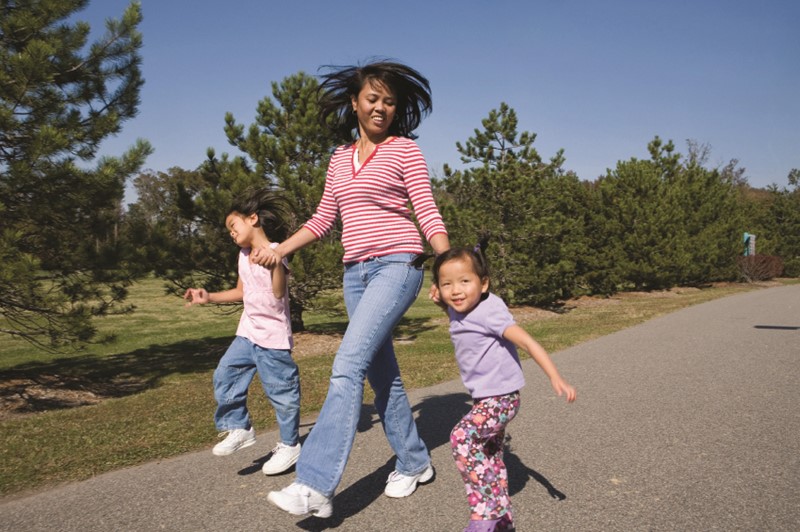
Physical fitness is a habit that we can learn. Children learn early to choose between sitting indoors and watching television or going outside to play ball. Parents teach fitness by their example.
Do you eat a balanced diet? Do you limit sugar and salt? Do you regularly participate in sports or exercises?
Now is a good time to get together as a family and get in shape. It is hard to find time to exercise, but the rewards are worth the effort.
- Staying in shape helps you look better and feel better.
- Eating nutritious foods helps keep the heart, digestive tract and circulation running smoothly.
- Regular exercise helps you handle stress.
Fewer major health problems and visits to the doctor save time and money as well as adding to the quality of your life. What activities does your family enjoy? Try:
- walking or running
- swimming
- bicycling
- soccer
- roller skating
- gardening
- playing games like tag
Parents Get Angry — but They Still Control Their Behavior
It is only natural that strong emotions are sometimes expressed in our relationships with our children. We love them deeply, worry about them, and want what’s best for them.
Even though parents get angry, they must control their behavior. Easier said than done? Yes! Here are some things to remember the next time your child “pushes your buttons.”
- Nothing can be taught when both of you are upset and angry. To teach a lesson, you and your child must be calm and alert. When anger takes over, logic goes by the wayside.
- Anger can be a secondary emotion. The underlying cause may be fear, pain, or guilt. Try to get to the cause.
- Anger can cause huge gaps in the best of relationships.
- Use the traffic stoplight approach:
- Stop… think before you act.
- Proceed with caution… consider what you want your child to learn from the situation.
- Go… follow through with a respectful, helpful solution.
Is Your Child Ready for Preschool?
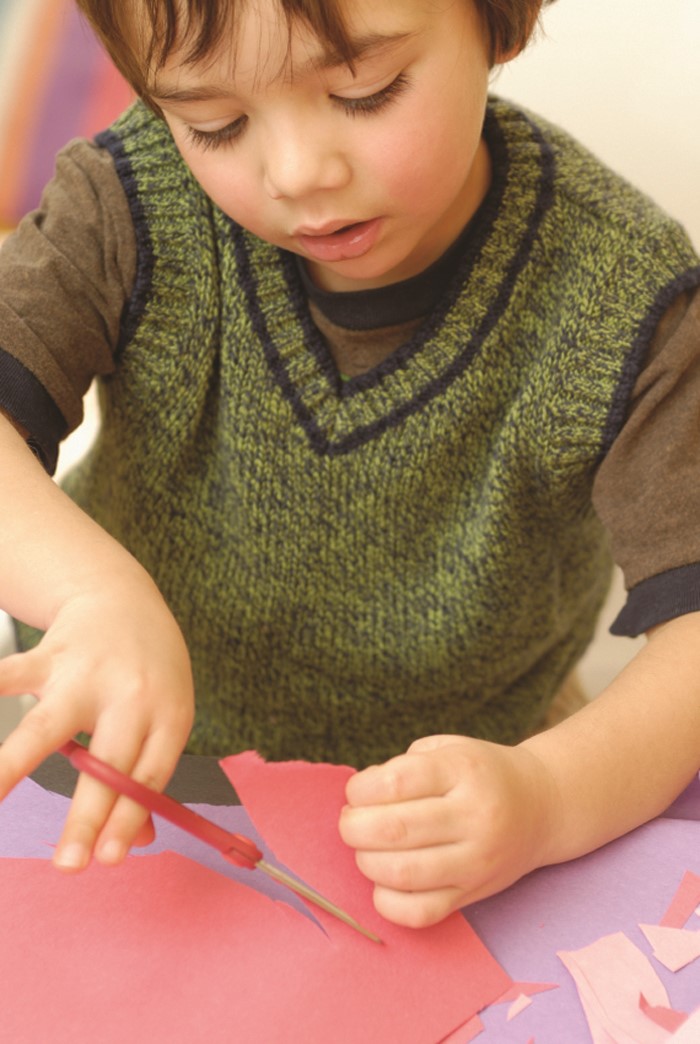
- Create things with paper, colors, scissors, markers and glue?
- Put on a hat, coat, and shoes or boots?
- Remember 2 or 3 steps in carrying out a task —such as take off your coat, hang it on your coat hook, come to the table for snack.
- Put a simple puzzle together?
- Draw a picture of a person which includes the head, body, arms and legs?
- Draw or copy shapes?
Create “I Love You” Rituals
Special “I love you” rituals repeated each day help you feel connected to your partner. Taking a few minutes to create a feeling of togetherness can pay big dividends. You not only get the warm feelings, but also often get more energy and cooperation to take on some of the other items on your “to do” list.
As you create your own rituals, keep in mind they need to be meaningful and repeated. Here are some ideas to start with:
- A special way of saying goodbye like a kiss and “I love you.”
- A few minutes for couple talk before dinner each day.
- Snuggle together at bedtime for a few minutes.
- Do dishes together after a meal.
Is My Child Ready to Play Sports?

Just because a sports organization allows four-year-olds to play, it does not mean that a four-year-old is ready to play sports. Your child’s age is not necessarily the magic number. Ask yourself:
- Is my child physically ready to play the sport? Does my child have the physical strength to complete a whole game? Do they have the skills needed to play the game (for example, catch a ball)?
- Is my child emotionally ready to play the sport? Can they handle losing a game or making a “bad” play?
Teach your child that learning new skills, having fun, and spending time with friends is what is important in playing sports. Let them understand that you are proud of them for being physically active, learning to be a team player, and showing “heart” or empathy for people they play with.
To help your child enjoy physical activity or sports:
- Create an environment that promotes fun above all else.
- Plan activities that allow children to problem-solve.
- Encourage all effort.
- Play games that let everyone “win” —like no-score games.
- Plan activities that promote teamwork (for example, how can we build the longest line with our bodies?).
Soccer is often the first sport played by older four-year-olds. Talk with your child about whether they want to play a sport. Make sure to give them a choice.
Whether competition has a positive or negative effect on young children depends on how adults handle it.
- For example, do not yell at your child or show frustration when they miss the ball or falls as they run the bases.
- Encourage them to learn from their mistakes and help them see the positive plays they have made.
- Try to let your child know that they are successful whether or not their team was the “winner.”
Friends Are Important — and They Help Teach Fairness
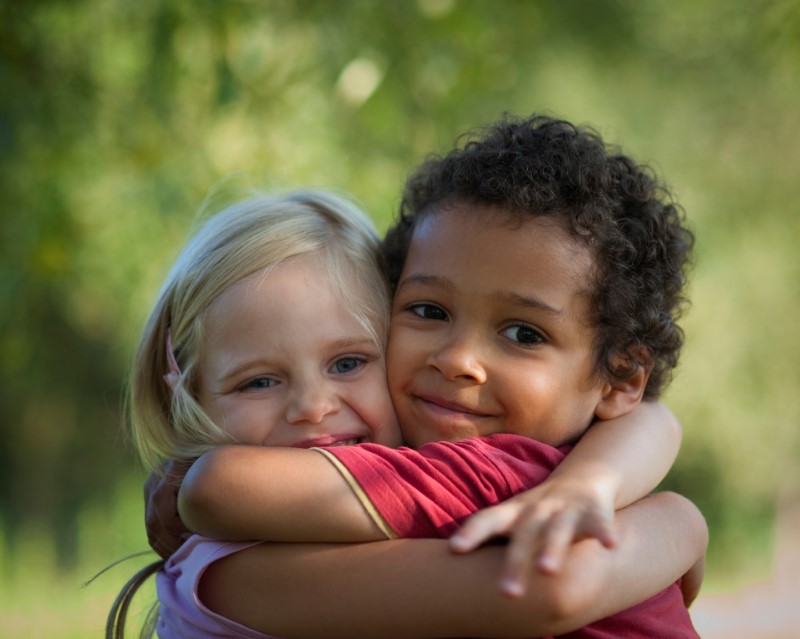 It can be so fun and exciting to have a friend to share toys and laughter with. The downside is that there can be a lot of arguing and hurt feelings, tears and jealousy. Parents of preschoolers might ask, “Why bother?”
It can be so fun and exciting to have a friend to share toys and laughter with. The downside is that there can be a lot of arguing and hurt feelings, tears and jealousy. Parents of preschoolers might ask, “Why bother?”
When children play with other children their own age, they learn about fairness, sharing, taking turns, following the rules, compromising and cooperating. They learn other children also want the biggest piece and the first turn. They learn other children feel badly when they have to wait or when someone pinches them. Children who only play with adults or older children don’t get the chance to work out problems with their same-aged peers.
Children whose peers reject them or who have no friends are at risk for problems later on — like:
- dropping out of school
- getting lower grades
- having a harder time adjusting to school
- having a negative outlook about school
Be prepared to hear children barter for friends: “If you do this for me, I’ll be your friend.” Some children seem unkind when they say, “I don’t want to be your friend.” Translated this means, “I want to play alone right now.” While another 4-year-old might not take this comment personally, parents find it rude and unacceptable. If this type of statement makes you uncomfortable, help your child restate what they have said without making an issue of it. Suggest they say, “I would like to play alone right now.”
How Can You Help Your Child Develop Friends?
Friends are important to a growing child. Parents provide nutritious foods, plenty of rest and exercise to help their children develop physically. Practice at being a friend is just as important for social and emotional growth.
Set up the play area to make it as easy as possible for children to play together.
- Children can range from calm to very active. Be ready for differences and provide things to play with that give everyone a feeling of success.
- Sand, water, big balls, a lot of open space, dress-up clothes, play dough, crayons and paper are usually favorites at this age.
- Pretend horses made from paper boxes encourage running, shouting, and letting steam off outside. A puzzle is quieter and requires cooperation.
- Large, open spaces invite fast movement —while small, full spaces help children move more slowly.
Expect some difficulties.
- It’s very hard for children to share until they are somewhere between 4 to 6 years old. Some do not share until much later if they have not had practice at it.
- Parents can expect some arguments — perhaps threats, bribes and other unpleasant ways of dealing with people.
- Try not to get involved unless your child asks you to — or if someone is going to get hurt. Adults who get involved in preschoolers’ problems frequently make things worse.
- Help children talk about what they want and need. Teach ways to wait, and teach children how to listen to what the other child is saying.
Observe and watch while your child learns to play with other children.
- It takes time for children to get used to the idea of letting other children play with their toys.
- If children are having difficulty playing together, separate them and try again another day.
Give Children Two Healthy Snacks Each Day
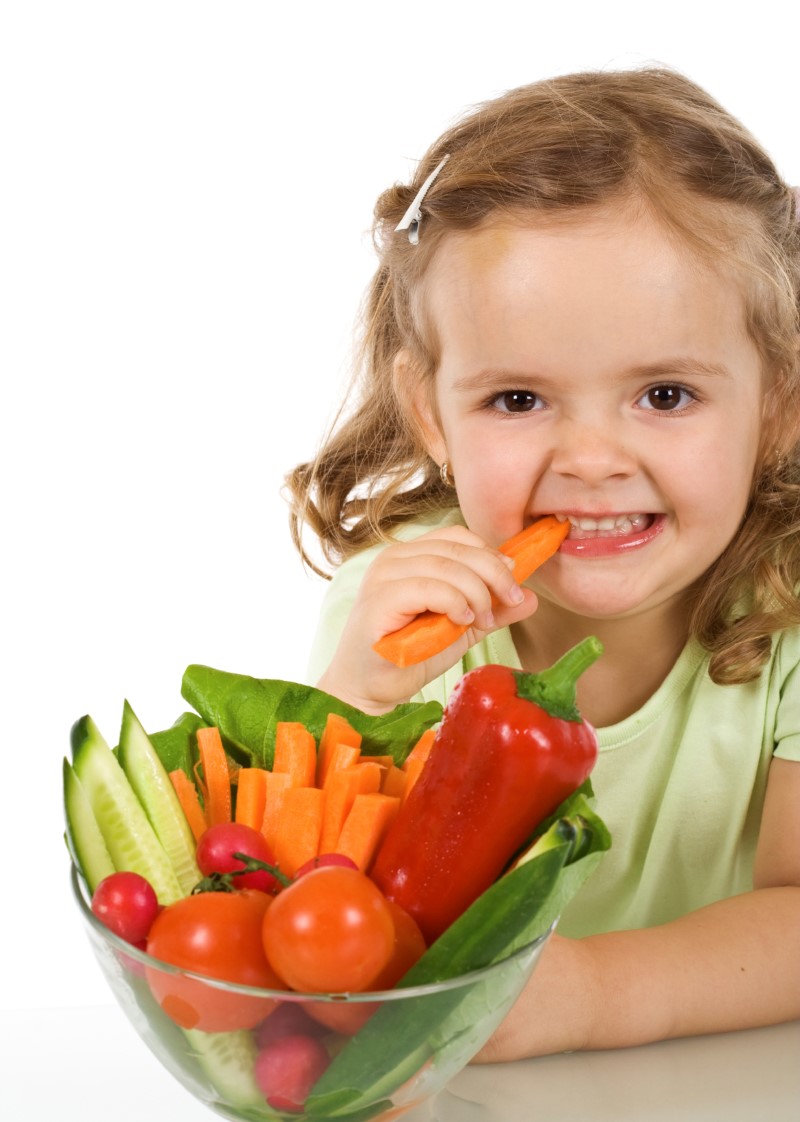
Snacks should be a regular part of a child’s diet.
- Since preschoolers’ stomachs are still small, they eat small meals. They need snacks between meals because they get hungry.
- Snacks should be nutritious foods, not junk food.
Good snacks include:
- fruit
- cheese
- carrots or celery
- crackers with peanut butter
- yogurt with fruit.
Should Left-Handed Children Change to Be Right-Handed?

By the age of 4 years, a child is generally showing a preference for using either their right or left hand. Nearly 90 percent of all children are right-handed. If your child is left-handed, do not force them to use their right hand. They will have fewer emotional upsets and perform better at drawing, cutting, writing and other fine motor activities if they use the hand they prefer.